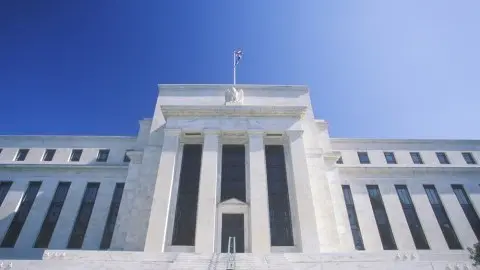Two US rate cuts this year - we’ve changed our view
Trade worries are not abating and the economy is starting to feel the strain. The Federal Reserve is preparing for a change of course and we now look for 50bp of rate cuts in 2H19
Plotting a new course
Over the past month, the debate surrounding the outlook for Federal Reserve interest rate policy has swung from “if” they will cut to “when” they will cut rates. Trade tensions look set to persist and recent data suggests the economy is more vulnerable to the fallout than it was in the second half of 2018. With senior policymakers opening the door to action, we now expect the implementation of the “Fed put” with pre-cautionary September and December rate cuts.
Economy feeling the strain from trade tensions
The combination of the US administration’s more belligerent position on trade with China and the willingness to use the threat of tariffs as a means of achieving non-related political “wins” (such as with Mexico and immigration) has only intensified concerns about the prospects for the US economy. There is a growing risk that the uncertainty surrounding global trade leads to a sense of paralysis in corporate America that prompts a broader economic slowdown.
Do firms go through the expensive process of on-shoring production back to the US or looking for non-Chinese suppliers only to find that President Trump has changed his position again? Or do they instead carry on with business as usual and risk higher tariffs that put up costs and hurt profit margins? Faced with such uncertainty many firms may simply sit on their hands and do nothing. This implies a slowdown in investment and hiring – and not just in the US – which in turn leads to lower consumer spending and the rising threat of recession.
The narrative surrounding the attritional nature of prolonged trade tensions received support from the latest jobs report, showing a significant slowdown in hiring in May – 75,000 versus the consensus forecast of 175,000, while there was a further 75,000 downward adjustment in employment numbers for the previous two months. Weakness can also clearly be seen in the manufacturing sector, with the ISM report at its lowest level since October 2016 as high inventory levels led to softer new orders. Currently, the Atlanta Fed GDPNow indicator is running at a rate consistent with 2Q GDP growth of just 1.4%, which would be the weakest outcome since 4Q15.
Signs of a slowdown...
The Fed's shift
At the same time, Fed officials appear to be laying the groundwork for another shift in stance. Having signalled a willingness to be “patient” on assessing whether a change in interest rate policy was going to be required, Fed Chair Jerome Powell stated last week that the Fed was now “closely monitoring” the implications of the protracted trade negotiations for the economy.
St Louis Fed President James Bullard (an FOMC voting member) was more direct, arguing that a rate cut “may be warranted soon” to provide some insurance in case of a sharper than expected slowdown”. Other Fed officials, such as Charles Evans, President of the Chicago Fed, continue to talk about the US’ “solid” fundamentals, but he too acknowledged that they can adjust policy “if that’s necessary”.
Equities like what they hear
The trade, macro, Fed talk and subdued inflation backdrop has led markets to price-in up to 100bp of rate cuts over the next twelve months. This coincidentally matches the demands of President Trump, which would, in his view, allow the US to lift off like “a rocket ship”. Equities like what they hear and we are left with the bizarre situation whereby “good” economic data is ignored and “bad” economic data is seen as increasing the likelihood of a rate cut so both bonds and equities rally.
Trade remains key
There is the possibility that rate cuts will not be required, but for this we would need to see a prolonged period of expectations-beating data and a swift positive conclusion to trade talks. In this regard, President Trump’s decision to pull back from ramping up tariffs on Mexico has renewed hope that he and the Chinese president could strike a deal at the G20 summit later this month (assuming the latter turns up). However, we think this is doubtful.
China will not want to be seen as having been successfully bullied into agreeing to US demands while President Trump’s view that tariffs are boosting US Treasury coffers and that the “strong” US economy can withstand near-term pain suggests he is not going to back down soon.
This could go in one of two directions. On the negative extreme, China refuses to do a deal with the US and uses domestic stimulus to offset to pain from trade. Donald Trump doesn’t back down, the US economy slows markedly and even aggressive rate cuts fail to stimulate the economy enough to get President Trump re-elected. China then gets to negotiate with a new Democrat President who may be less confrontational and with whom they can get a “better” deal.
On the positive extreme President Trump’s hardline stance intensifies and the Fed delivers the aggressive rate cuts he has been demanding. He then swiftly ends the trade war (irrespective of whether he has won a “great” deal) and tariffs are slashed to zero. We then get a positive wave of sentiment with equities surging and the economy bouncing back right ahead of the election.
Rate cuts are coming
Either way, the trade situation will get worse before it gets better and is likely to spread to Europe and Japan. Given the language shift from Fed officials we believe that they will use the June FOMC to signal an easing bias. This would perhaps be through repeating Chair Jerome’s Powell use of the “closely monitoring” phrase and downward revisions to their economic projections and their “dot” diagram of rate expectations, which currently has a rate hike in for 2020.
The trade situation will get worse before it gets better and is likely to spread to Europe and Japan
Some in the market believe that this could be a catalyst for a July rate cut given Powell has said all meetings are “live”, not just the ones where there are press conferences. However, outside of manufacturing, the US numbers don’t look too bad. The ISM non-manufacturing index moved higher this month, consumer confidence is holding at strong levels and labour surveys suggest the slowdown in employment growth remains primarily because of a lack of suitable workers rather than a downturn in hiring. After all, the National Federation of Independent Businesses reported that a net 21% of its members are looking to hire (highest since last December) while 38% of businesses can’t fill the vacancies they currently have. These readings are not consistent with an imminent threat of recession.
Cutting rates in such an environment could be negative for corporate and household sentiment if it is interpreted as signalling the economy may be in worse shape than believed. It would also leave the Fed open to criticism of caving into political pressure. Instead, we suspect the Fed will favour waiting until September and follow up with another 25bp move in December.
Trump needs a deal
This is a shift from our previous view that the Fed would keep policy on hold through 2019 and 2020, but we remain less aggressive than the market. Our more upbeat assessment centres on the strong US fundamentals, the tightness in the labour market and our view that President Trump will want deals to be done. Bond markets will be impatient for more so a temporary 2-10-year yield curve inversion is probable before a trade agreement is signed.
We remain less agressive than the market
The often-repeated suggestion that equity markets are a better barometer of his success than opinion polls means that President Trump will need to be wary that pushing too far for too long runs the risk of weakening his re-election campaign. After all, lower interest rates can only do so much to support the equity market if the core problem – trade – is not dealt with and global growth is deteriorating. A weakening economy and plunging equity markets is an easy attack line for a Democratic challenger.
The hawks in Trump’s team who are more focused on restraining China's global political ambitions will also be wary because if Trump loses the election they will be out of the Administration and will not be able to influence the debate to anywhere near the same extent. As such, we think President Trump will make compromises to get a deal done, but with Europe and Japan also in the firing line our trade team believe it may be 1Q20 before there is a clear resolution.
This publication has been prepared by ING solely for information purposes irrespective of a particular user's means, financial situation or investment objectives. The information does not constitute investment recommendation, and nor is it investment, legal or tax advice or an offer or solicitation to purchase or sell any financial instrument. Read more
Download
Download article
14 June 2019
In case you missed it: The ‘Powell put’ This bundle contains 9 Articles
